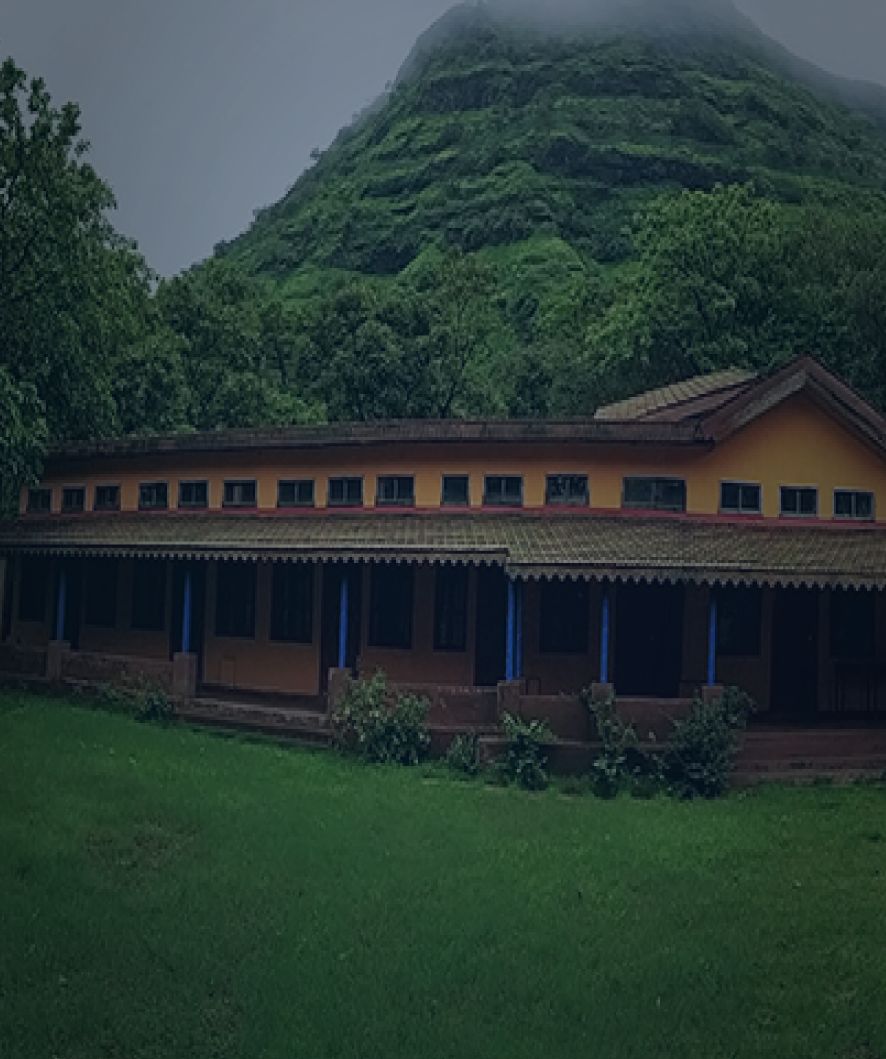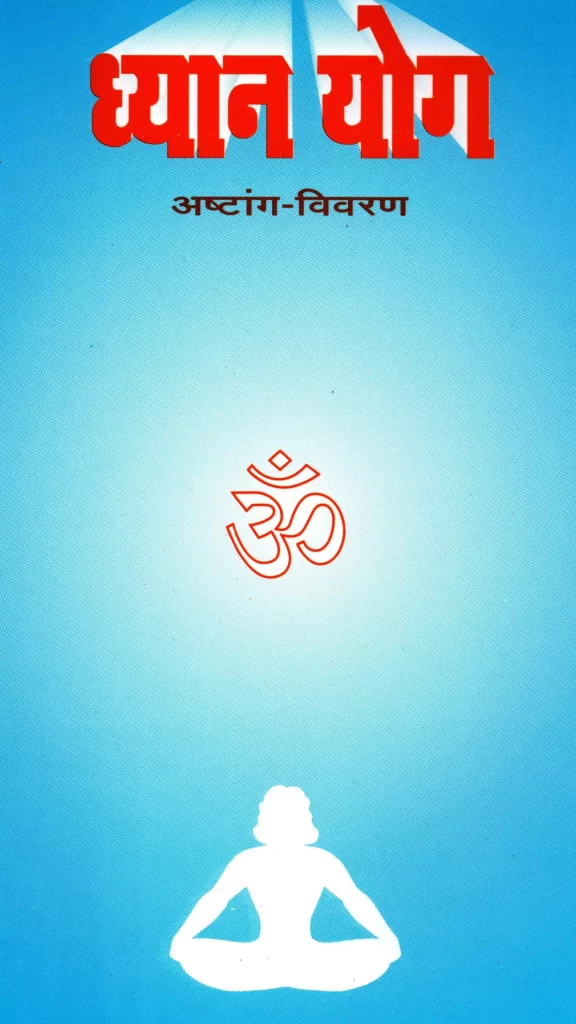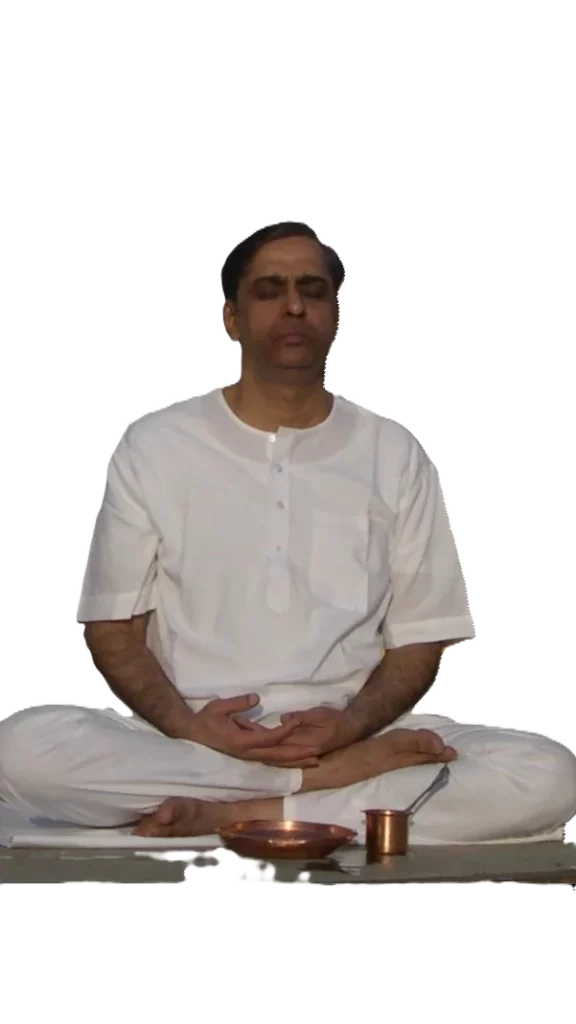
Dhyan Kendra
Every human being at some level wishes that his existence be filled with eternal joy, happiness and an unwavering, absolute sense of peace, which is only possible in a life which experiences divinity within itself.
For thousands of years, all great saints and seekers have chosen to walk down this divine path of self-realization, where the fundamental spiritual practice is ‘being with the True Self’ also called as ‘Swa-Swaroop-Anusandhan’ i.e. the path of meditation or Dhyanyoga.
The 25th verse in the 6th Chapter of the Shrimad Bhagwat Geeta precisely explains this spiritual practice through the verse ‘Ätmasaunstham Manaha Krtva …” (Focus your attention on the Self and do not think of anything else).
Under the guidance of Swamiji’s teachings and blessings, Swaroopyog dhyan centers (kendra’s), held online as well as offline, focus on helping seekers understand and practice meditation in its true scientific form.
Feel free to explore the various explanations and discourses available on the Dhyan Kendra page and other resources made available on our site. Hari OM!
- Friday Meditation Centre, Bhandarkar Road, Pune, Fri, 7:30 – 9 pm IST (Shri. Yogesh Kale)
- Saturday Meditation & Satsang, Karvenagar, Pune, 1st and 3rd Sat, 7 – 8:30 am IST (Dr. Gajanan Natekar) Read More …
Upcoming Kendra
- Shri. Yogesh Kale – 9890447547
- Dr. Gajanan Natekar – 9960392705
- Dr. Himanshu Vaze (Swaroopyog Office) – 020-25652457
- Sou. Swati Damle – 9930478073
Contact Us
Dhyan Prakriya

“śhanaiḥ śhanair uparamed buddhyā dhṛiti-gṛihītayā| ātma-sansthaṁ manaḥ kṛitvā na kiñchid api chintayet ||” Ch. 6, Verse 25 ||
This is the verse in Shrimad Bhagwat Geeta, explaining the exact process and central concept of meditation. Our scriptures state that God (Divinity or Absolute Truth, whichever way one may choose to refer to) is omnipresent and which also means God is present within every human being, is called the ‘True Self’ that lies beyond the physical body, the mind and the intellect (i.e. personality self).
For a true seeker, who wants to experience God i.e. experience self-realization, he must search within himself and this fundamental search process attempting to transcend the body, mind and intellect, is called Dhyan i.e. Meditation, practiced and perfected by our saints over several thousands of years as explained precisely in verse 25, of Chapter 6 of the Bhagwat Geeta. The Geeta encourages a seeker to create the right external and internal environment.
To maintain an Appropriate External Environment:
- Choose a clean area free from clutter, noise and any distractions
- The seating should preferably not be too high or too low from the ground
- Take a clean piece of cloth or a cushion to sit on
- Keep the back and shoulders straight, which allows for mindful sitting, but be careful not to put any extra strain on the body
- Bring the left leg close to the center of the body such that the heel of the leg touches the center of the body while the left thigh remains flat on the ground
- Ensure both thighs are flat on the floor
- The ankle of the right leg then should be placed on the left leg in such a way that the heel of the right leg rests gently in the space between the ankle and the heel of the left leg.
- The stomach should be drawn in as much as comfortably possible, which will help keep the body straight and prevent the back from arching
- Both elbows should be kept as close to the body as possible and the hands resting lightly on top of each other, and placed in the center of the body, at the waist, below the bellybutton.
- This is also called Sahajasana, in which no part of the body or nerve is pressed, no tingling or irritation occurs, and the seekers give themselves an opportunity to focus their attention on the “Self” by keeping the body still, very alert and competent. This is also known as “Asana Sthairya”.
To maintain an Appropriate Internal Environment:
- After stabilizing the body, the seeker needs a favorable internal environment to stabilize the mind
- For that it is preferable to close the eyes, and no further movement of the eye-balls is expected, as there is no question of seeing any object.
- Given the direct connection between the speed of breathing and the flow of thoughts, take a few deep conscious breaths to focus on yourself, reducing the volume and constant flow of thoughts in your mind.
- Then one should focus his attention internally on the “center of perception” i.e. in the center of the forehead just about in between the eyebrows, while proceeding to the next step in the process, attentively and with full understanding.
As then mentioned in the verse 25, the seeker is asked to let go (drop) all thoughts, desires and imagination from the mind, and with the help of the intellect, govern the mind to focus complete undivided attention (single pointed attention), within the center of the forehead. This area where attention is focused is also called center of perception as this is the place where one will come to experience his True Self – Self-Realization. (P.N.: The center of perception typically extends approximately from between the center of forehead, upwards, to the center of the head.)
The mind is a fickle tool, far too easily distracted by internal or external factors and hence to help focus its attention, a small ‘mantra’ like ‘OM’, ‘SOHAM’ (i.e.’Saha’ + ‘Aham’) or ‘SHRIRAM’ can be chanted in the mind in a rhythmic and repetitive manner by superimposing the ‘mantra’ over the breathing process of inhaling and exhaling e.g.: ‘Saha’ when inhaling and ‘AHAM’ while exhaling allowing ‘SOHAM’ to be synchronized with breathing.
While doing so, the key step in this whole process is for the sadhak to withhold in his mind and intellect (i.e. ‘Chitta’) the principle (‘Dhaarnaa’) the ‘mantra’ expresses and maintain undivided attention at the center of perception, without allowing any thoughts, desires or imagination to distract the mind. E.g.: ‘Saha’ meaning ‘the omnipresent God’ and ‘Aham’ meaning the ‘consciousness of one’s true self’ are one and the same. The words (‘SOHAM’) in the ‘mantra’ have a meaning (‘my true consciousness and the God are one’), the meaning represents the underlying principle (‘ones true consciousness i.e. ‘Swa’ or ‘God’ i.e. ‘Ishwar’). The sadhak is expected to hold in his mind (‘Chitta’) this very concept or principle highlighted by the ‘mantra’ (not the words or the thought, rather the principle they represent) and focus attention.
The mind fundamentally is very fickle, tends to lose interest and attention rapidly and hence the above described process needs to be performed repeatedly. This process is also called ‘sensing of the true self’.
The whole process starts with trying to understand what needs to be done, take the help of thought and related analysis to understand and practice every step described, and once comfortable with the previous step, let go of that thought while moving onto the next step, till a point is reached where thoughts no longer play any role and the sadhak’s mind is completely focused on the consciousness of the true self.
Contemplation (‘Chintan’) is needed to clearly understand the process and the point where a certain thought(s) needs to be ‘let gone’, move onto the next step, build clarity, let go of related thoughts and eventually arrive at the point where all thoughts cease to exist and undivided single pointed attention (focus) is on the ‘consciousness of true self’ i.e. culminates into meditation (‘Dhyan’).
Please note that ‘only reciting the mantra in the mind’ or ‘experiencing a state of thoughtlessness (Blank or Zero State of mind)’ or just ‘thinking about God or True Self’ is not expected here. Rather, it is expected that the meditator ‘keeps the body extremely steady without any physical movement, stays alert, holds the principle (God or self) that the mantra highlights in his mind and intellect, and, with the help of the intellect governs the mind to focus undivided attention, eliminating all thoughts, desires and imagination, at the center of perception.’
To experience God one has to transcend the body, mind and intellect which can be only done with His help. One cannot ‘hold God’ directly in his ‘mind and intellect’ (‘Chitta’) and hence have to focus his attention on the ‘gateway to God’ i.e. ‘consciousness of self’ (Self = existence in its pure form and consciousness = awareness of one’s existence).
Bhagwan Raman Maharshi described this process as “Find out Who am I”, Shri Nisargadatta Maharaj called this “I am that” and Swamiji (Swami Madhavanand) has called it as “Be with the self” Or “Sensing of the self”. This is in a nutshell the process of meditation.
Dhyan Nirupan

Meditation process explained
Dhyan Aasana

Dhyan Aasana explained
